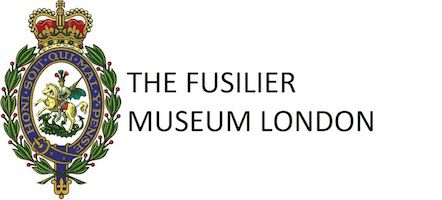At the start of the week, we arrived at the archive and were given just a name; P W Hubbard. After a brief introductory session to the archive itself, which included handling sensitive archive material and accessing the online listings, we got to work.
We started our project by entering his name into a plethora of search engines ranging from the national archives to findmypast.co.uk. The discovery of his full name, Percy William Hubbard, and family names were vital to our project as they allowed us to link primary and secondary sources.
We had to establish certain details to ensure that the group were researching the same individual. An example of a difficulty we faced in this is prevalent in the discovery of a second P W Hubbard, who also served with the Fusiliers, but died a year later than the man in question.
We utilised the Fusilier Museum’s ‘Modes’, to locate any primary material with contextual knowledge of P W Hubbard. The discovery of letters, photographs and medals helped to increase our intrigue into the life of this soldier. The kind words written about Hubbard to his family, concerning his religious belief, “sunny nature and cheery disposition’, reminded us of the personal elements of the story and the truly tragic consequences of the First World War.
A key area we developed our knowledge in was the structure of ranking in the army, and the knowledge of the medals that were awarded. We faced some confusion surrounding his rank, as it was not explicitly clear from our sources, where he served, in which division and at which position he filled at certain dates. This was resolved through extensive research of the army listings, his medal cards online and through the generous help of the current Lancashire Fusiliers. We learnt, through the ‘Modes’ program, that Hubbard received four medals for his time in the War, the: 1914/ 1915 star, Allied victory medal, British War Medal and Military Medal. The medals do not depict any exemplary action on Hubbard’s behalf, as they are viewed as the general medals which were awarded to soldiers, but they do commend him for fighting in the war.
Hubbard was born in Lambeth in 1880 to Loretta and William Hubbard. He had 6 siblings, one of whom died young. We discovered a census from 1911, which decrees that Percy was a bank clerk of Westminster bank, and as a result we can assume he was conscripted to fight in the war, an idea which is further supported by his late age of 37 upon his death. Hubbard was clearly respected by his fellow soldiers and commanding officers as there was a great amount of respect evident in the writings of these men in the letters to his family with news of his demise. Such is displayed in the letter from Lieutenant Col. A. Stone to Hubbard’s sister which wrote, “His loss is one which both the company and the Battalion will feel severely.” There was also some evidence to suggest that his personality provided an occasion for which he could be used as a morale booster. In the same letter it is mentioned that, “his sterling qualities (inspired) confidence and affection in both his brother officers and the men”.
Religion formed a great part of his identity. He was connected with St John’s Parish in Clapham and is remembered in letters as often praying at the altar at Sunday service.
Sources also suggest he was very athletic, the CWGC website mentions that he was Captain of Cricket and Rugby at Westminster Bank, and whilst serving in the 7th Royal Fusiliers in 1914, he won a heavy-weight boxing championship. This suggests his character was competitive and athletic.
We postulate that Percy Hubbard was conscripted into the army around 1915, due to the knowledge of his occupation as a bank clerk and his relatively late age of 37 upon his death. In examining his medal card, we received the knowledge that he served in the Royal Fusiliers as a corporal, then later a lance sergeant, and further on, as a second lieutenant in the Lancashire Fusiliers. He arrived in France on March 6th 1915, as shown on his medal card, and yet returned to the United Kingdom for officer training two years later. His position changed rapidly between 1917 and 1918, shown by his entry into the 9th Lancashire Fusiliiers from the 3rd in October 1917, and a transferral to the 16th in March 1918. We believe he stayed in the 16th up to his death in 1918, attributed to, we presume, the fighting in the Somme at this time. His death, caused by a shell bombing on June 6th is commemorated by a grave at ‘Cabaret-rouge British cemetery, Souchez’, France.
This week at the Fusilier Museum has been extremely enlightening and beneficial in heightening our appreciation of British History. Our interest in the Great Wars and the army have been significantly deepened, especially that of the role of the Royal Fusiliers. We have been extremely lucky to study primary sources from the archives of the Museum and to work in the Tower of London, a place of much historical significance and beauty. We all would also like to offer a special thanks to the Fusilier Museum for offering the work experience placement to us, in particular to Stephanie Killingbeck.
